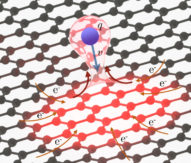
Octopods found to aid industrial methods
Nanoscale octopods that act as catalysts and plasmonic sensors are creating a path towards more efficient industrial processes, according to an international study.
Plasmonic metals like gold and silver can be used as sensors in biological applications and for chemical detection, among others. Plasmonic materials are not known for being among the best catalysts. Furthermore, catalysts are typically very poor for plasmonics.
Yet, according to research lead Emilie Ringe of Rice University in Houston, Texas, United States, combining them in the right way shows promise for industrial and scientific applications. The research was part-funded by the EU’s Seventh Framework Programme and the European Research Council and included the participation of researchers from the United Kingdom and Germany.
Commenting, Ringe said: “Plasmonic particles are magnets for light. They couple with light and create big electric fields that can drive chemical processes. By combining these electric fields with a catalytic surface, we could further push chemical reactions. That’s why we’re studying how palladium and gold can be incorporated together.”
The researchers created eight-armed specks of gold and coated them with a gold-palladium alloy. The octopods proved to be efficient catalysts and sensors.
Ringe added: “If you simply mix gold and palladium, you may end up with a bad plasmonic material and a pretty bad catalyst, because palladium does not attract light like gold does. But our particles have gold cores with palladium at the tips, so they retain their plasmonic properties and the surfaces are catalytic.”
The team established characterisation techniques that will allow scientists to tune application-specific alloys that report on their catalytic activity in real time.
The full study appears in Scientific Reports.




